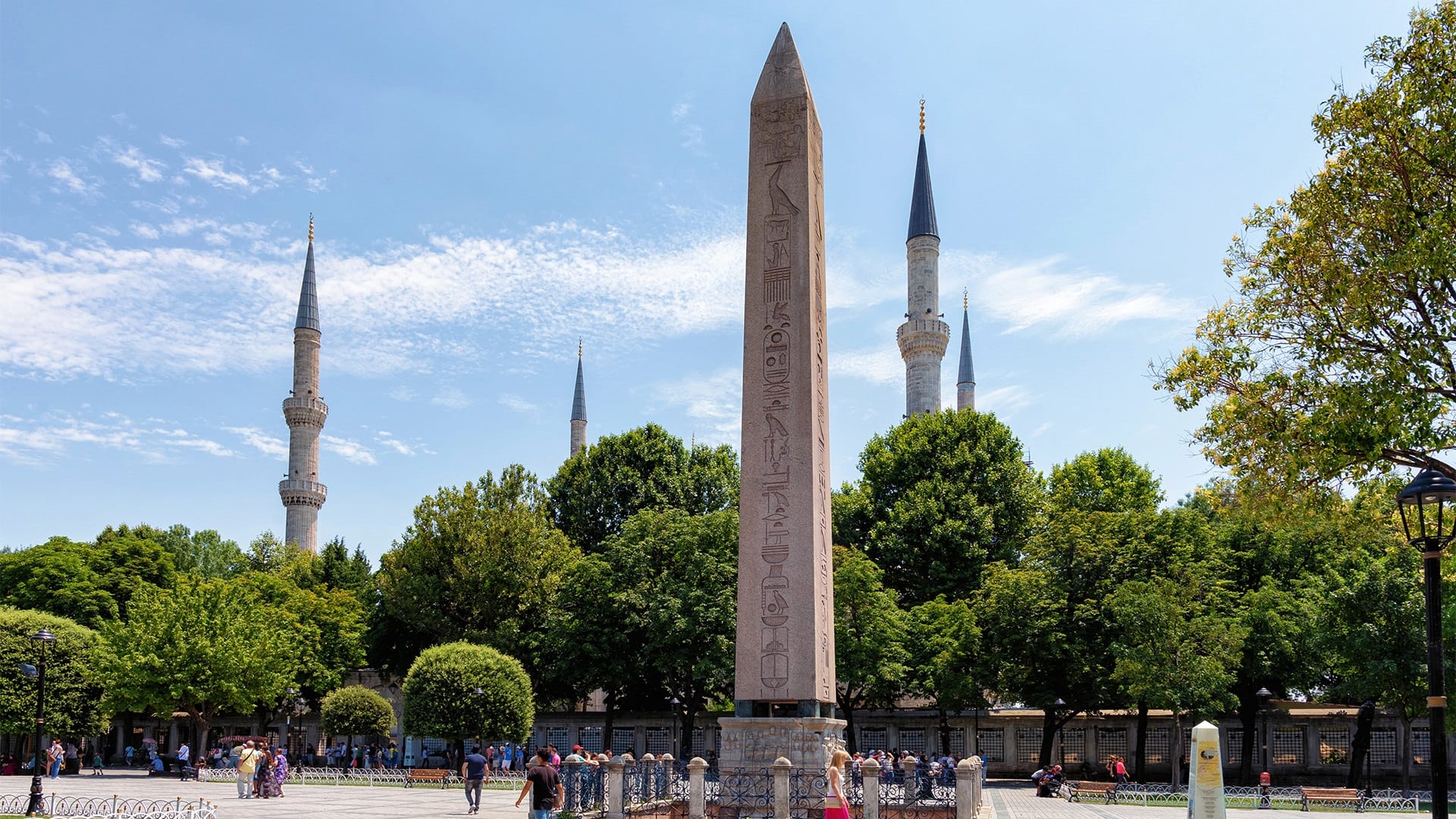

destinations
Hippodrome
Chariots of Fire
Imagine watching the greatest spectacle on earth, you might not realise but the Hippodrome, now a peaceful park, was once an Eastern Roman chariot race course - a stadium of splendour that could hold 100,000 people.
Thriving amidst a patchwork of well-trimmed lawns, the Hippodrome is one of Türkiye’s most revered landmarks. During the Eastern Roman heyday, this site was a famous recreational and entertainment venue and hosted several events, including festivals, political parades, horse races and chariot races.
The ceremonial square has survived the ages and is deeply rooted in legendary and long-standing Eastern Roman and Ottoman history. Here, the bronze serpentine column unravels many mysteries with every bend of its winding course. The centrepiece of the Hippodrome, however, is perhaps the towering obelisk of Theodosius. Standing on an ornately carved plinth and adorned with historic inscriptions, the Hippodrome has aged gracefully over thousands of years. In the southern niches of the Hippodrome is the ancient brick obelisk, whose gilded façade leaves only a shadow of what it was today. The legendary Hippodrome, which also houses the ornate German Fountain, is the crowning glory of İstanbul.
Today, the track of the old racecourse is covered by Sultanahmet Meydanı (Sultanahmet Square), a spacious square now lined with ancient obelisks.
In honour of a Pharaoh
The Obelisk of Theodosius was originally erected in honour of the sixth Egyptian pharaoh of the Eighteenth Dynasty. It was rebuilt by Theodosius I in the fourth century CE during Roman rule. The obelisk is made of smooth red granite and is decorated with ancient Egyptian characters all over its surface. Between the base and the rest of the structure are four bronze cubes, placed in each of the four corners, which help to transport this impressive monument. Carvings from the time of the reconstruction are carved into the marble surface of the plinth itself.
Tribute to the Heroes
The unique Serpent Column was erected to commemorate those who fought and defeated the Persian Empire at the Battle of Plataea in 479 BC. It is one of the oldest monuments in İstanbul. Of the three serpent heads, all were lost around 1700, while the only one found is safely preserved in the nearby İstanbul Archaeology Museum. The eight-metre-high column originally stood in front of the Temple of Apollo at Delphi.
The Column of Fire
Built in the 3rd century, Constantine’s Column is one of the most important monuments in İstanbul, standing 35 metres tall. It is a good landmark for tourists travelling by tram to the Grand Bazaar. It was commissioned by the Roman Emperor Constantine the Great to commemorate the declaration of Byzantium as the new capital of the Roman Empire. This historic structure was originally 50 metres high; however, a strong storm, earthquake and fire destroyed it, leaving it only 35 metres high and with black burn marks, earning it the name “Burnt Column”.
Symbol of Friendship
The German Fountain, opposite the mausoleum of Sultan Ahmed I, is the true symbol of friendship between Türkiye and Germany. This octagonal domed fountain at the entrance to the Hippodrome was a gift from the German Emperor Wilhelm II to Sultan Abdulhamid II and the city of İstanbul and was officially opened in 1901. The architecture is unique in its surroundings and was built in the neo-eastern-roman style and decorated with gold mosaics inside. The arches between the columns are a symbol of the friendship between the two countries, and the idyllic location of the fountain adds to its charm.



